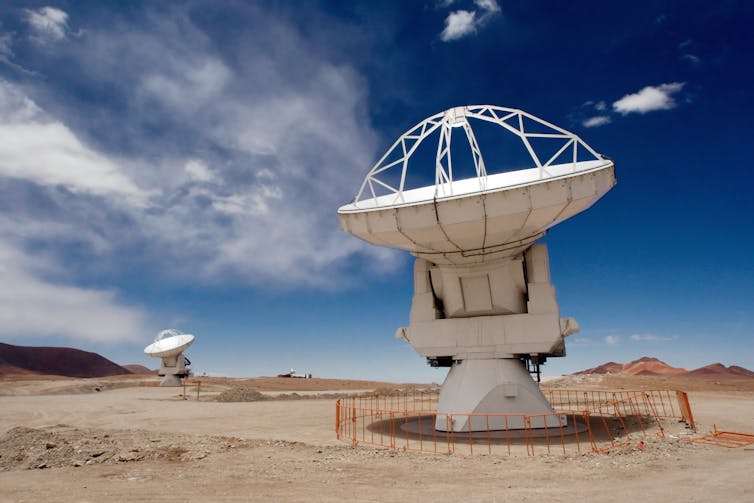Yangtze River Delta makes strides in sci-tech, industrial innovation
The Yangtze River Delta, encompasses Shanghai and the provinces of Jiangsu, Zhejiang and Anhui, covering around 358,000 square kilometers, less than 4 percent of China's territory, generates nearly a quarter of China's GDP and contributes to over 1/3 of the country's total foreign trade

Estimated reading time: 6 minutes
By Yu Jianbin, Wu Qiuyu, Chang Qin, People's Daily
The region is home to some impressive high-technology innovations. At the National Supercomputing Center in Wuxi, Jiangsu province, incredibly powerful supercomputers are pushing advancements in computing. Tourists visiting the beautiful West Lake in Hangzhou, Zhejiang province, can take advantage of a convenient digital tour guide right on their phones. Scientists have constructed the Experimental Advanced Superconducting Tokamak, or the Chinese “artificial sun,” to pave new ground in fusion energy. The quantum computer prototype named "Jiuzhang" is striving to unlock the next era of advanced computing...
As one of the most innovative regions in China, the Yangtze River Delta has leveraged its advantages in talents, technology, developed manufacturing, complete industrial and supply chains and huge market potential over the past five years, emerging as a trailblazer for China's technological and industrial innovation.
The Songjiang district, once an agricultural and traditional manufacturing area in Shanghai, began seeking transformation in early 2016 after conducting in-depth investigations and research on the industrial layout along the G60 Expressway.
By transforming thousands of mu (667 square meters) of land once intended for real estate development along the G60 Expressway into industrial zones, the district aimed to promote the division of labor in the Yangtze River Delta, expand the scale of the industrial chain, and turn the G60 Expressway into an "innovation corridor."
With two major expansions, now the G60 Science and Technology Innovation Corridor covers nine cities in the Yangtze River Delta, generating 1/15 of China's GDP. Songjiang district has established itself as an important hub for advanced manufacturing and a vital source of innovation in the Yangtze River Delta.
The Yangtze River Delta today is accelerating the push for boosting high-quality development.
Longgang, a county-level city in Wenzhou, Zhejiang province, was known for its prospering printing industry in the 1980s and 1990s. However, it gradually lost its competitiveness as homogeneous competition intensified within this traditional industry.
"Traditional industries can still develop, but they need to find paths of high-quality development. Printing is only rough machining if it's not driven by technologies," said Liang Xiaoke, executive secretary general of Longgang's printing and packaging industry association.
In Longgang today, flat prints come alive on digital screens and can even interact with users with the augmented reality technology, and the near field communication technology allows users to add new contacts to their phones by just simple taps of their phones against business cards.
Longgang has stepped up its efforts to advance industrial transformation and upgrading. Its R&D input in the printing industry surged 44 percent in 2022 from a year ago.
The "Quantum Avenue" in Hefei National High-Tech Industry Development Zone, Anhui province, is where Mozi, the world's first quantum science satellite, was developed. It is also the birthplace to the world's first trunk line for secure quantum telecommunications which known as the Jing-Hu Trunk Line and the first optical quantum computing machine prototype.
In August last year, the largest quantum metropolitan area network in China was launched in Hefei.
"Quantum communication has been well commercialized and widely applied. The quantum metropolitan area network in Hefei has connected over 90 businesses," said Gu Fengbo, an expert with the QuantumCTek Co., Ltd.
According to Gu, Quantum communication has moved beyond the confines of the laboratory and made its way into commercial applications. He said QuantumCTek Co., Ltd., has grown from a startup of just over a dozen employees to a listed company, a national-level high-tech enterprise, and a “little giant” specialized and sophisticated enterprise that produces new and unique products.
Besides, Chinese display panel manufacturer BOE has also thrived in Hefei. With total investment of over 100 billion yuan ($14 billion), the company offers more than 25,000 jobs in the city and has attracted more than 100 supporting enterprises to develop in Hefei, making Hefei one of the world's biggest hubs of display production.
The region of Yangtze River Delta has reaped major benefits from its integrated development during the past five years.
Having breakfast at 7:00 am at home in Pudong, Shanghai, joining meetings an hour later at the R&D center of Hengyu Biotech in Pudong's Zhangjiang Hi-Tech Park, working in Hengyu Biotech's testing center in Jiashan Economic and Technological Development Zone in Zhejiang province from 2:00 pm, and returning home at 7:00 pm - this is the daily routine of Zhu Xiangying, a senior engineer.
Zhu holds a PhD diploma of Fudan University, and Hengyu Biotech she founded has emerged as a dark horse in global biomedical innovation.
Zhu told People's Daily that the Pudong company focuses on R&D and sales, while the one in Jiashan spearheads manufacturing, and that's why she works in both places.
According to her, Hengyu Biotech has purchased R&D services worth over 1 million yuan from Zhejiang University and Fudan University in the past two years with the "Innovation Coupon" provided by Jiashan government, which tremendously accelerated its innovative development.
The region has set up a National Innovation Center par Excellence, established a joint collaboration mechanism for technological innovation and strengthened cross-regional cooperation on digital economy. With high-standard planning and high-quality implementation, the Yangtze River Delta region is striving to explore the path to build a new development paradigm.
What's Your Reaction?











 annis
annis 












